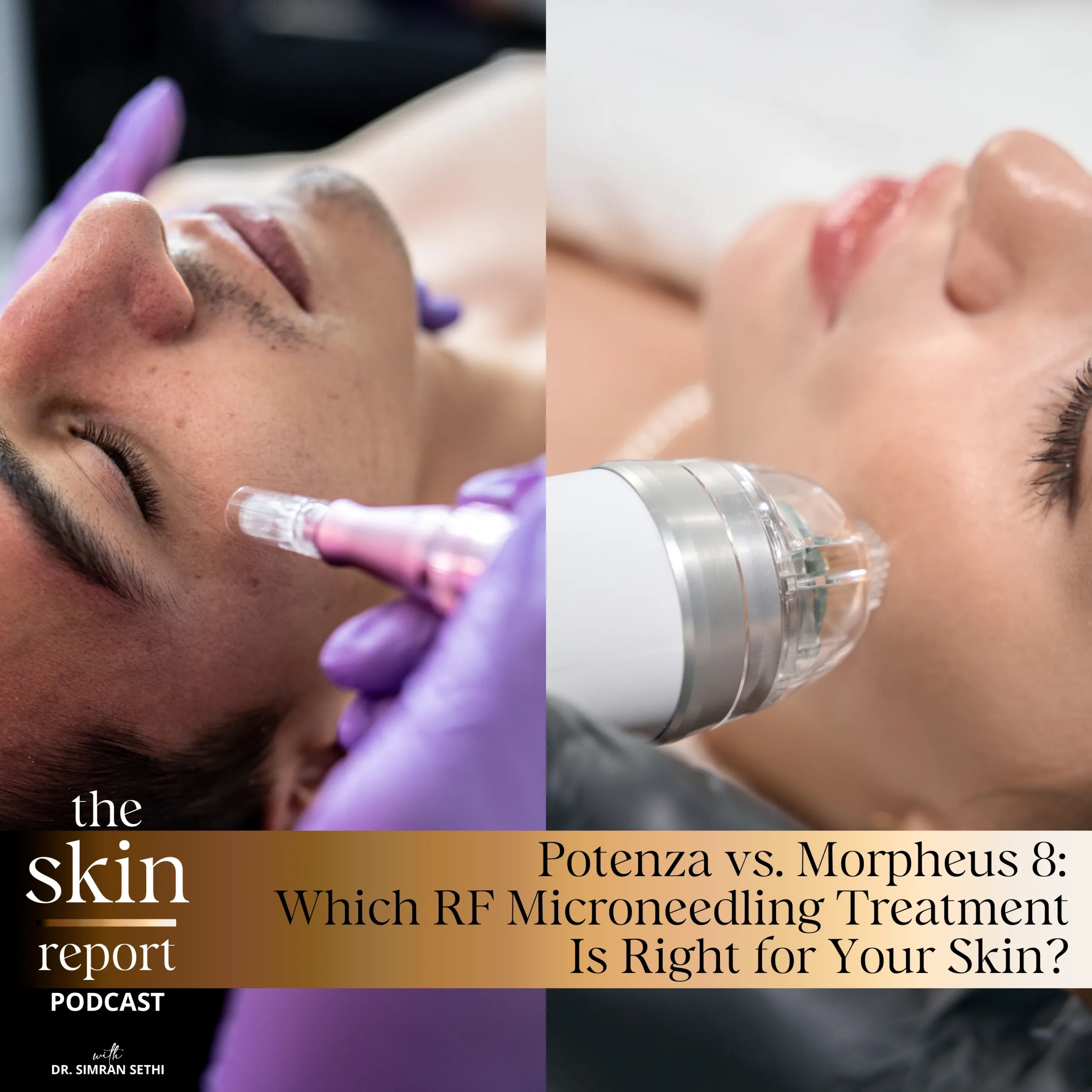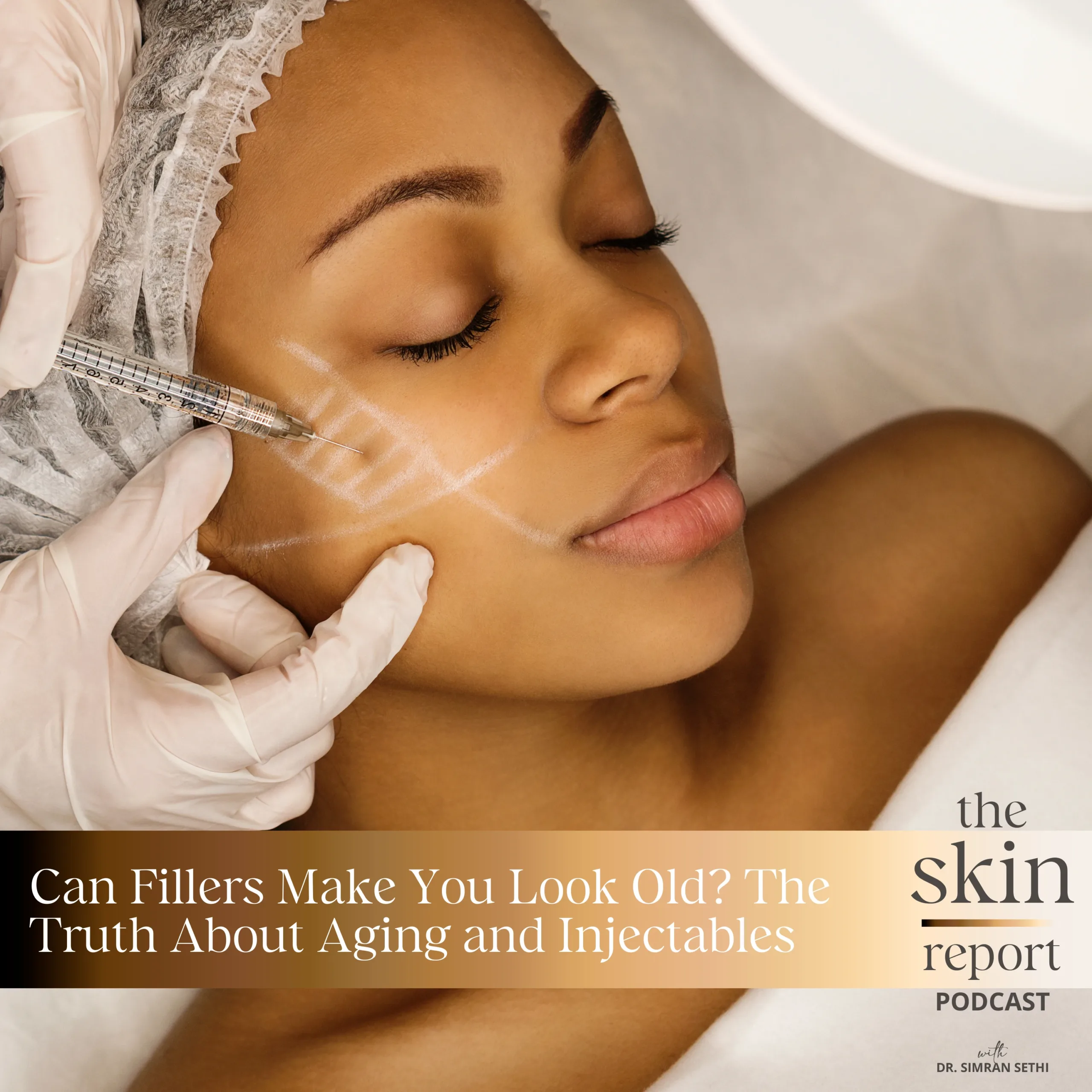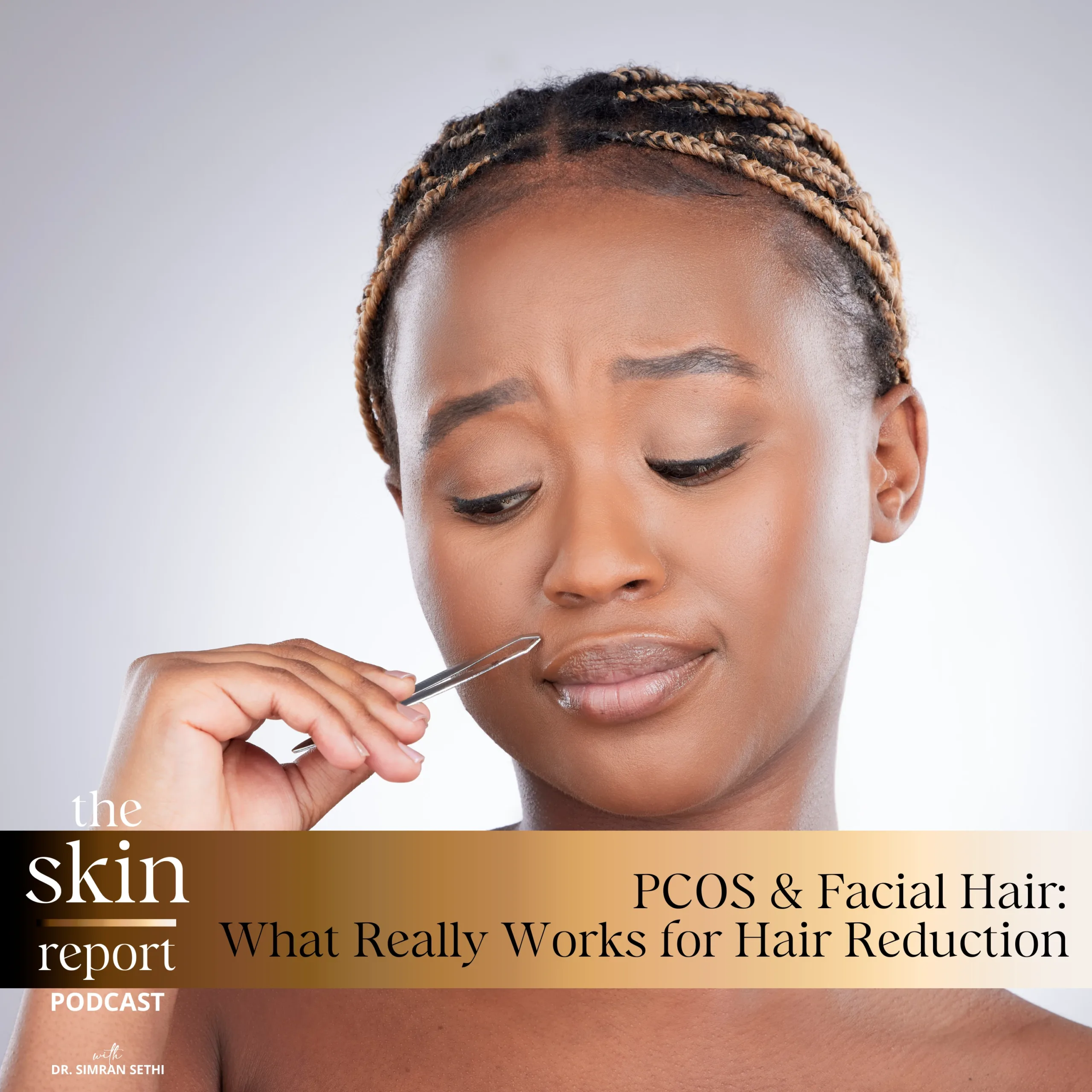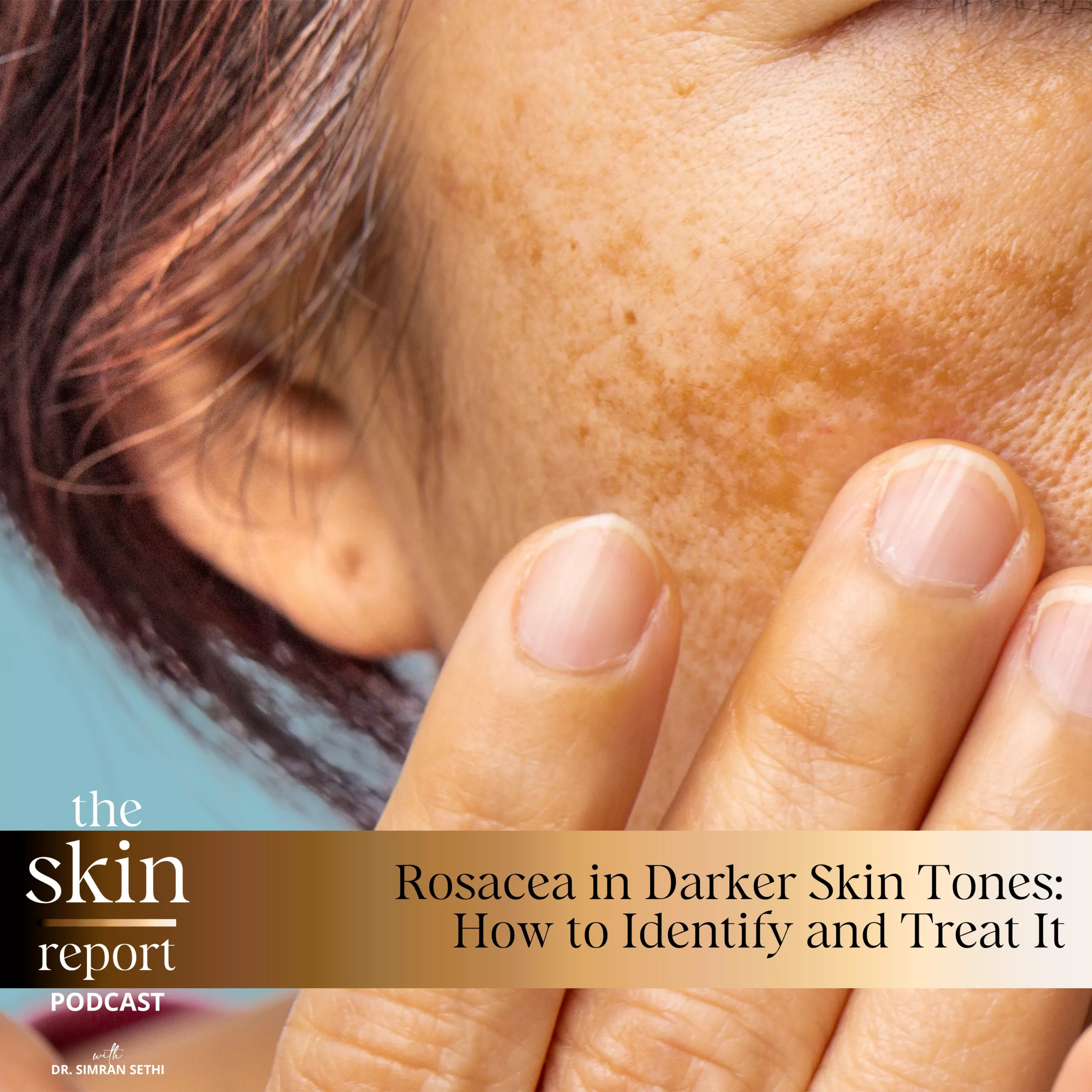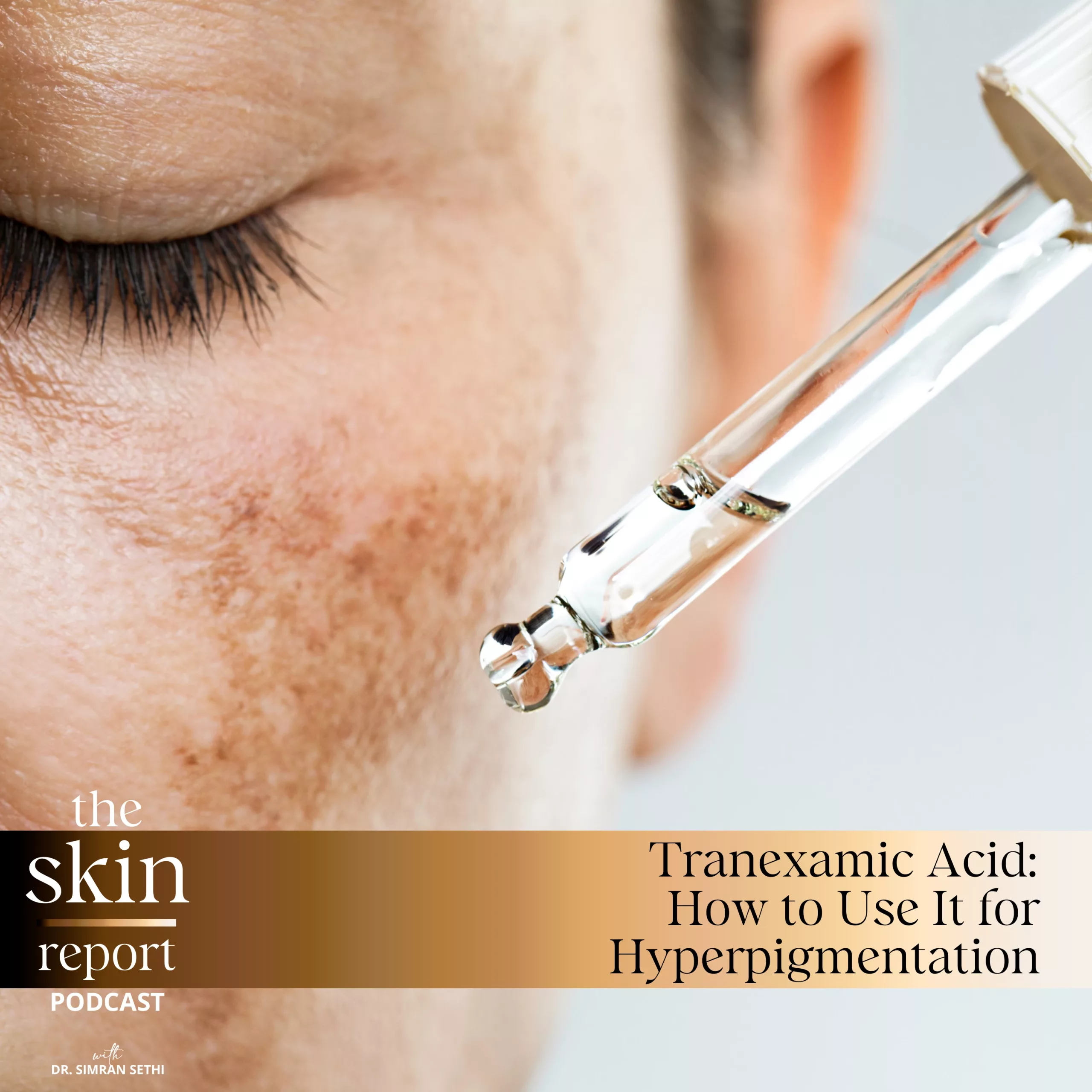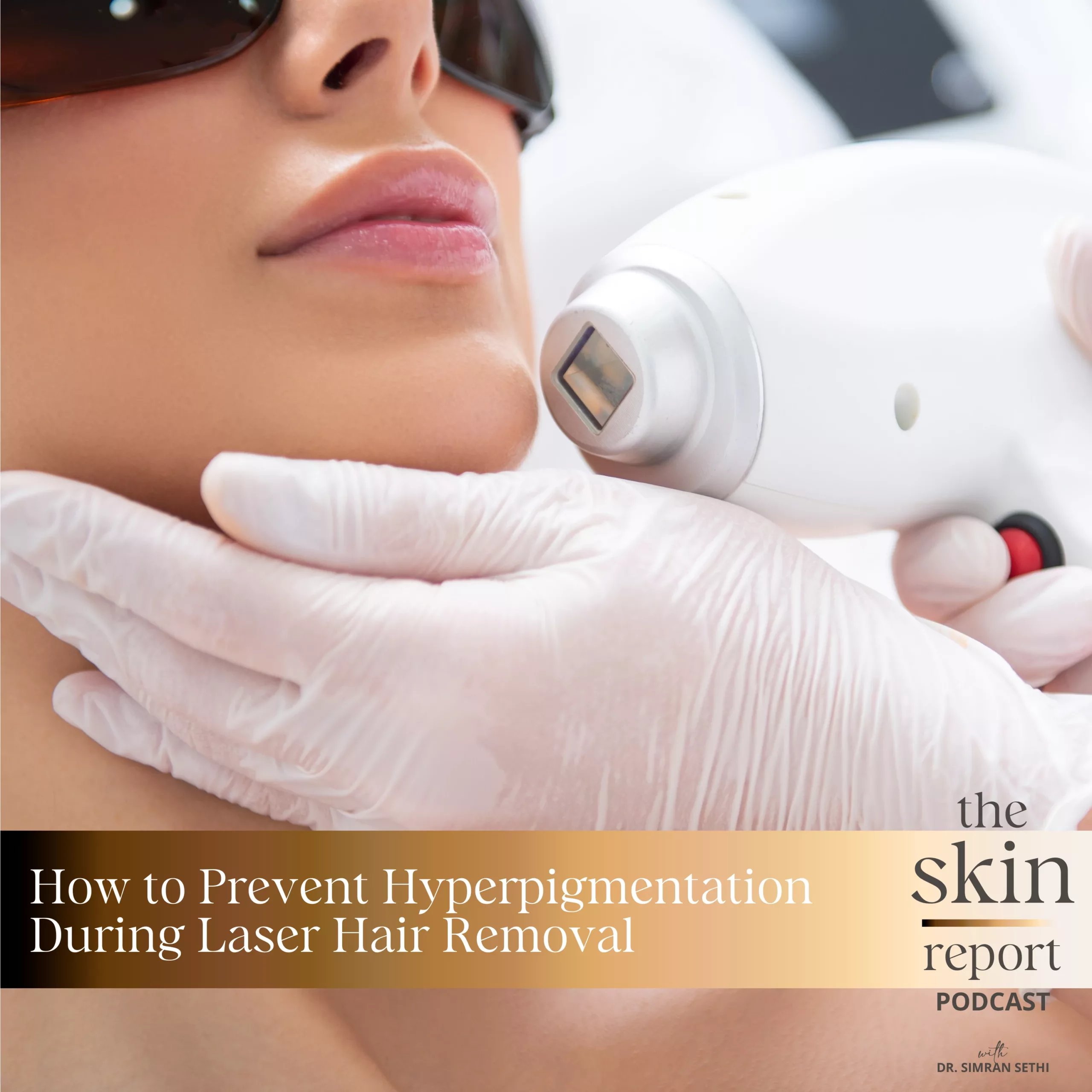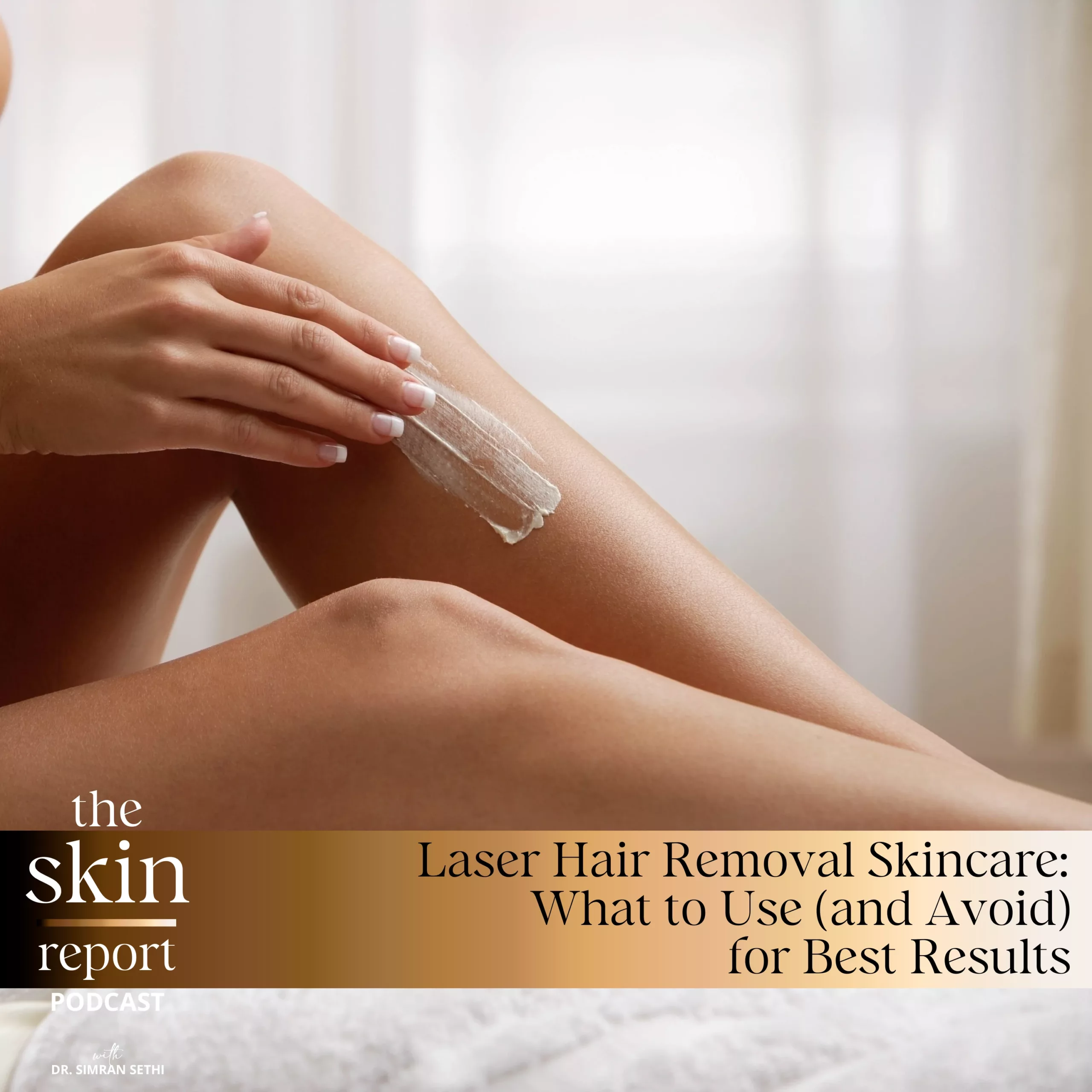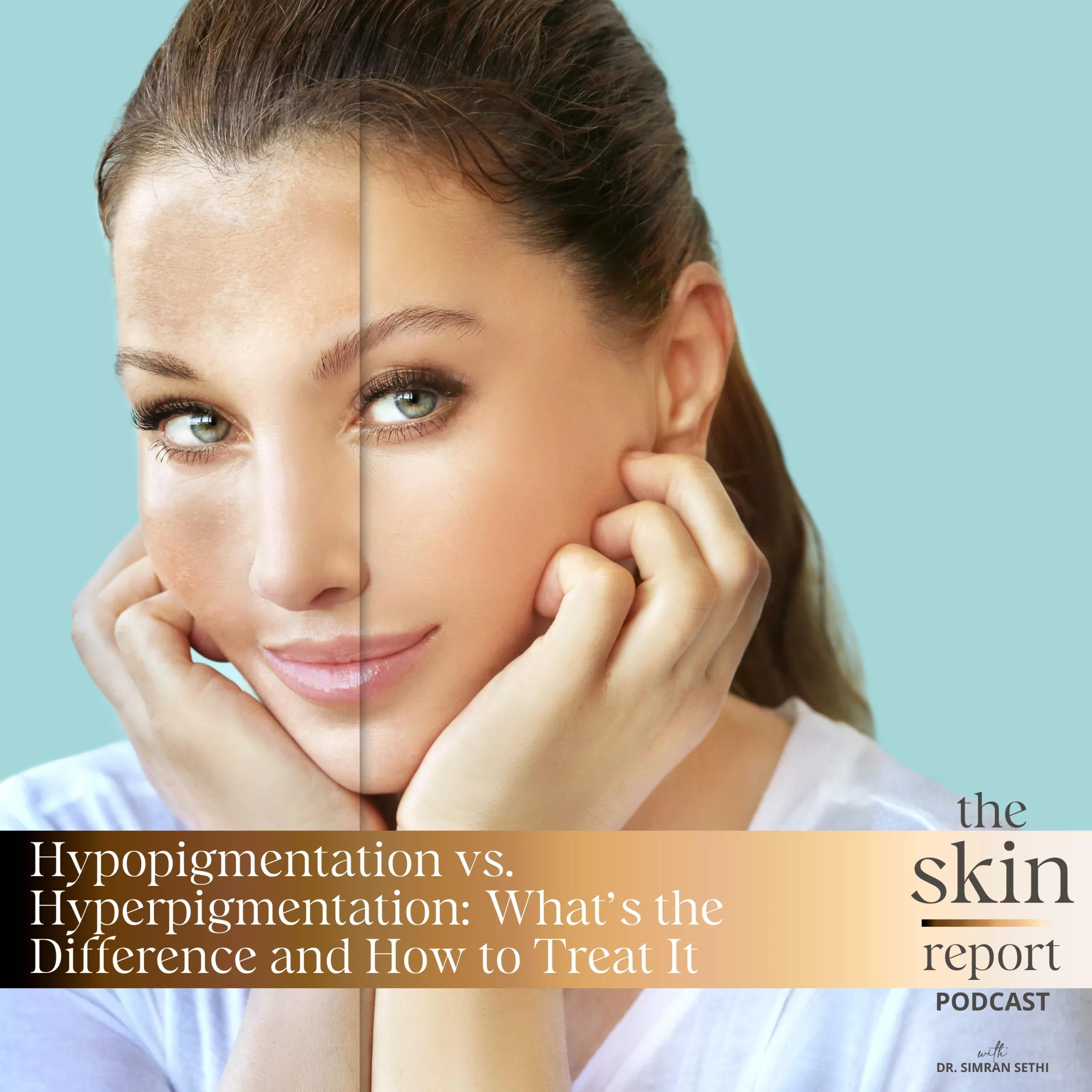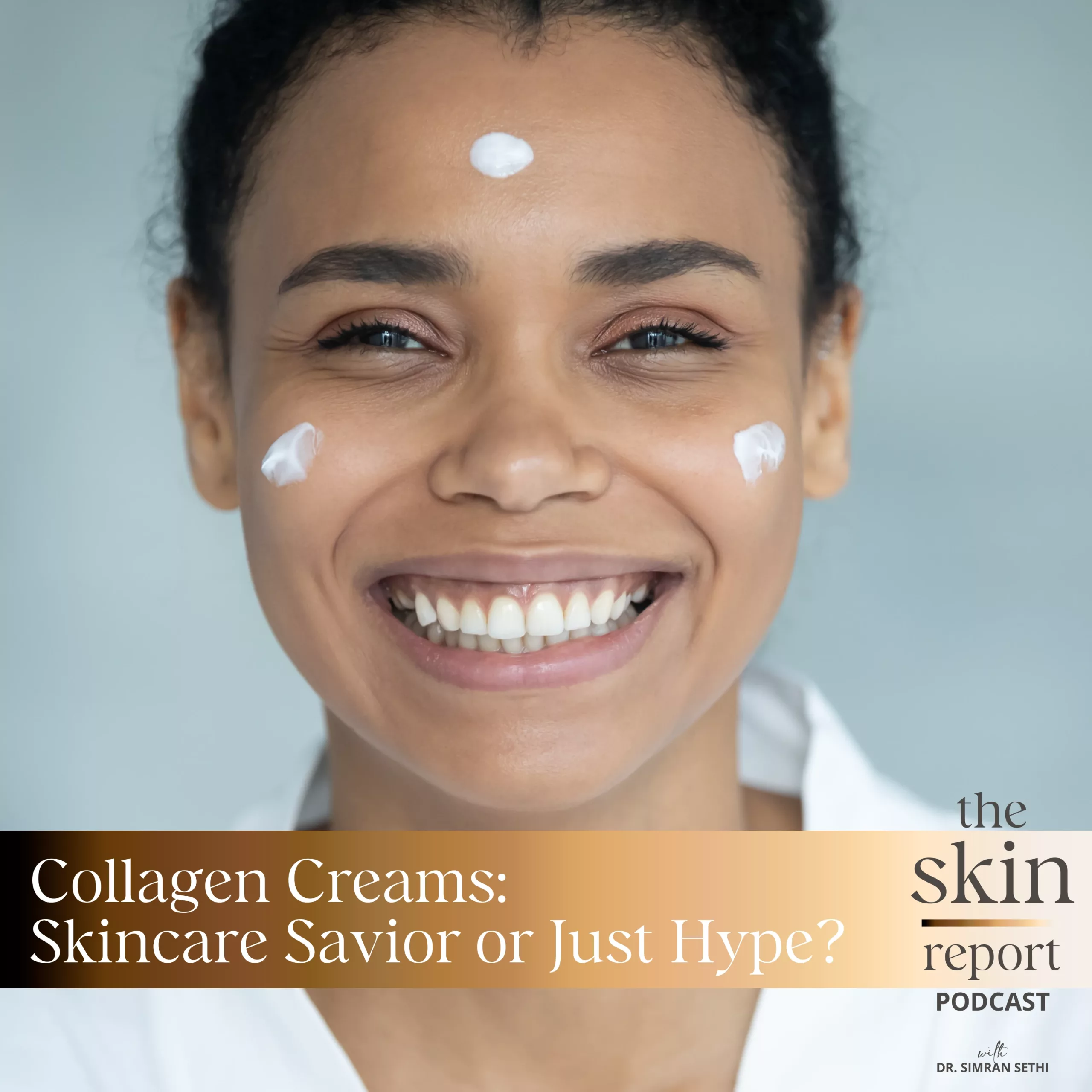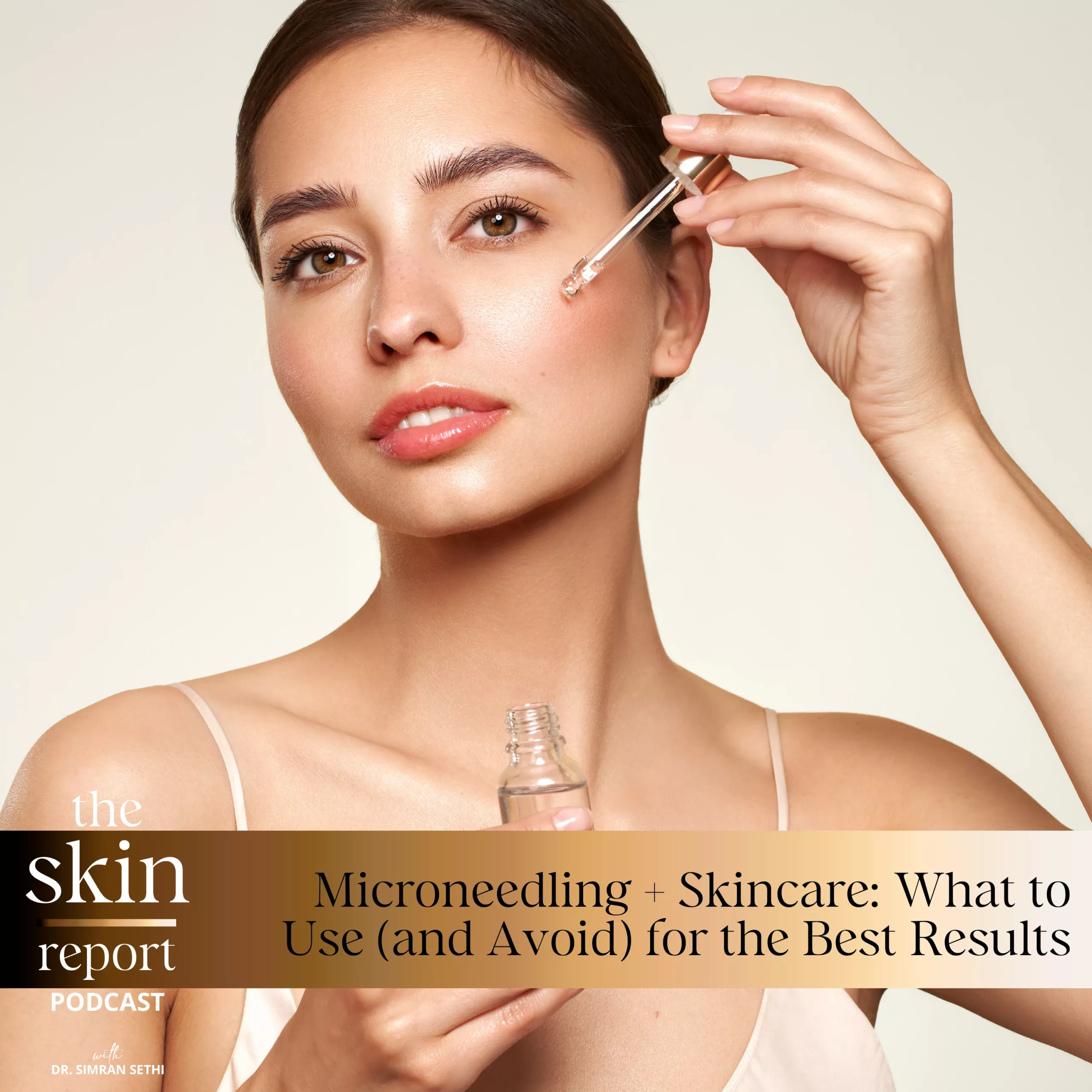When we think of skincare, we often consider the topical products we apply externally. However, our nutrition can also impact the skin. So how exactly does the food we eat influence our skin? It can be hard to determine what foods to avoid to keep our skin healthy, leaving us with many questions. For example, does chocolate cause acne, and what about dairy or fatty foods? Additionally, you may be curious about how nutrition affects skin aging and how to choose the best foods for skin health.
The Skin Report is a podcast created to educate listeners on methods to improve skin health for people of all ethnicities and ages. This week, host Dr. Sethi discusses the relationship between nutrition and our skin. She addresses common questions regarding how nutrition affects skin acne production and premature aging. Additionally, this episode provides information on why some foods can have adverse effects on the skin from a scientific perspective. So tune in to learn how to keep your skin healthy from the inside out!
Beauty Instagram: https://www.instagram.com/renewmd_beauty/
RenewMD Beauty Medical Spas, California: https://renewmdwellness.com/
This transcript was exported on November 8, 2022 -view latest version here.
Skincare can sometimes feel overwhelming. Whether it’s finding the right products, ingredients, or treatment, there’s a lot out there, but not always for women of color. That’s why I set out to educate myself and others so that we can all feel beautiful in our skin. Hello and welcome to The Skin Report. I’m Dr. Simran Sethi, an internal medicine doctor, mom of three, and CEO and founder of RenewMD Medical Spas and Skin by Dr. Sethi.
For the months of September and October, we took a deep dive into specific topics, skin of color and melasma, respectively. While we won’t be covering a four part serious in November, we will be tackling something else, skincare trends and hot topics.
Today’s topic is the relationship between our nutrition and our skin. I feel like every year there’s a new food that beauty influences are either eliminating or encouraging you to eat that will help clear skin and make it shine. But from a scientific perspective, what’s really going on? Keep listening to find out.
You may know from listening to the podcast that the basis of my skincare line and practice is to nourish the skin renewal cycle at every step. By using potent ingredients that optimize new and younger skin renewal, we can balance our pigment production for healthy, glowy skin. We can nourish our skin both externally and internally. When we think of achieving good skin, we tend to focus on the external by applying topical creams and serums. Of course, topical application is important, but in order for any topical ingredients to actually work, they have to first cross the skin’s keratinized dead layer before going into the epidermis and dermis.
You may recall from episode seven of the Skin Report we discussed medical grade formulations. You can find a link to that episode in our show notes. In it, I mentioned how medical grade skincare has the ability to reach the dermis compared to drugstore products, which typically only stays on the epidermis.
However, what we eat or don’t eat also has a tremendous effect on our skin. That’s why today I’d like to focus on internal signals, how our food impacts acne production and skin aging. As we enter the holiday season in the US and the wedding season in places like India, we want to look our best. Despite the pandemic, the events industry grew by a net 4% in 2022, so for many of us, this may be our first time returning to large gatherings, overseas familial events, and more.
So let’s talk about how we can enjoy enticing foods while keeping our skin healthy from the inside out and for the long run. Stay tuned to hear me tackle the most common food culprits for breakouts.
Growing up, I think we all have heard about foods that supposedly cause acne, such as pizza, chocolate, ice cream, and more. It’s quite staggering how many people even today still believe that acne’s caused by eating greasy foods and sugars. While there is some truth to that, scientific evidence tells us a more nuanced story. When we return, we’ll tackle the three most common foods or fats that may lead to acne.
Before we dive in, I want to quickly say that health doesn’t occur in a vacuum. While there are general understandings, every person and their body has certain needs, and if you have a condition or allergies, you will need something even more specialized. Alongside that, I want to emphasize that I believe in balance, not necessarily elimination or rigid restriction when it comes to most foods. There are no morally good or bad foods. There are just some foods that are more nutrient-dense as well as some fats and ingredients that help fuel our bodies, brains, and skin than others. So without further ado, let’s look at the three most popular foods and fats associated with acne: dairy, chocolate, and fatty acids.
There has historically been a lot of debate around whether dairy hurts or helps our skin. In recent years, the conversation and research has shifted to show that the consumption of dairy has been proven to directly increase acne production in teenagers and young adults. For example, the International Journal of Dermatology published a recent review in which they compiled large databases of acne and nutritional studies to draw conclusions on what worsens and improves acne. Dairy was included in the study, and if you’d like to read the report directly, you can find the link in our show notes. However, I’ll summarize the findings here. Dairy has shown to increase levels of androgens, which will promote sebum production. As we’ve discussed on the show before, sebum is the national oil our skin produces. It helps to keep us moisturized, but too much of it can lead towards more acne.
I’m not suggesting to completely remove drinking milk or eating cheeses and yogurts. However, if you suffer from acne, substituting dairy with a plant-based milk and reducing cheeses and yogurt may help to curb breakouts. For example, one cup of unsweetened almond milk has only .4 grams of sugar in it compared to cow’s milk, which contains over 12 grams in one cup. One more thing about the dairy findings. As I said, they trigger greater sebum production. Why is this important to know? It means that if you have dry or mature skin and do not currently suffer with acne, you may not need to reduce your dairy intake. When we understand how different foods and fats can lead to more acne, we will have a better grasp on how it applies to our specific skin based on type and age.
Onto chocolate. Chocolate in excess quantities has been shown to increase acne breakouts. There aren’t any conclusive studies that point towards dark versus milk chocolate consumption, but in general, if the chocolate has more sugar in it, it will promote more acne production. Limiting chocolate consumption and sugar with it is the best course of action to prevent acne breakouts.
Next, let’s chat about fatty foods, specifically omega-6 fatty acids. Most of our consumption of omega-6 fatty acids occurs due to consumption of vegetable oils. So when our parents told us that eating deep fried or greasy foods causes pimples, there was some truth to it. However, omega-6 fatty acids are different from omega-3 fatty acids, which can be found in nuts, seeds, and fatty fish like salmon. We should not completely eliminate omega-6 fatty acids from our diet, but balance fats by leaning more towards anti-inflammatory omega-3 fatty acid rich foods. A diet that is low in vegetable oils in general will reduce acne production.
We can help reduce acne if we adopt a diet that is low in oils and dairy products, but rich in low glycemic index foods like vegetables prepared with minimal oils, fruits instead of desserts like chocolate and candy, and a small quantity of healthy fats from nuts and fatty fish. This may feel overwhelming to do it all at once, so I like to encourage lifestyle approaches that naturally fall in line with this. For example, the Mediterranean diet has great guidelines. It has no calorie restrictions or eliminations. Instead, it emphasizes whole grains, raw fruits and vegetables and fish, which has omega-3 fatty acids.
In my experience, however, just eliminating the consumption of milk has huge benefits, as most teenagers drink way more milk than they need. Culturally, we think that milk is essential for growing teenagers as it provides calcium for growth, but nut milks are an excellent alternative that are fortified with calcium and vitamin D for bone growth and have zero sugars, which is one of the reasons dairy promotes acne and are low or have zero fat, again, removing another component that increases acne and inflammation. When we return we’ll chat about which foods contribute to aging and more.
Let’s talk about how nutrition can cause our skin to age prematurely. We have known the negative effects of sugar on our health for decades. When it comes to skin, studies have shown how sugar specifically causes aging. I’d like to emphasize that sugar ages our skin just like pollution and smoking does. Before we move on, I think we should address something important about sugar. I want to clarify the types of sugar from a scientific perspective because I think there tends to be many myths and misunderstandings around it.
There are several types of sugar including lactose which is found in dairy, fructose found in fruit, sucrose found in table sugar. The sugar found in your blood is known as glucose. When someone is diabetic, their blood sugar levels need to be externally moderated and aided via medication and insulin. So why is it important to know about the different types of sugar? I think sometimes when we discuss sugar, it can be a sensitive topic whether or not you struggle with disordered eating. For anyone who lived through the 90s and 2000s, there was a lot of food shaming in the media to an unhealthy extent. At one point, influencers and food outlets were comparing the sugar in fruit, fructose, to that of the sugar and cookies and claiming that anything with sugar was bad for your body and skin.
Sugar is a carbohydrate and carbohydrates are the main source of energy for our bodies. However, when consumed in excess, sugar can bind to our skin proteins. Collagen and elastin are two of our skin’s essential proteins that give it its strength and elasticity or bounce. Collagen and elastin fibers are cross-linked to create strong skin tissues so that the skin is more resistant to wrinkles and damage. However, when sugar molecules bind to the collagen and elastin, they modify the protein shape, which prevents the proteins from cross-linking like they normally do. This leads to weaker skin, which is saggier and prone to wrinkles. This process is called glycation and does not just occur in skin, but in all our body’s tissues like blood vessels and kidneys just like in diabetes.
If sugar is not inherently bad for you, but excess sugar is why such a fuss? Can’t we just reduce our sugar intake and move on? The reason why sugar and skin are so heavily tied together in the discussions around aging is because of AGEs. When sugar molecules attach to skin proteins, they’re considered advanced glycation end products or AGEs. Developing AGEs is irreversible so reducing sugar intake early in life is important to reducing the damaging effects of sugar consumption on skin and other tissue. Certain kinds of food preparations like smoking and browning make meat and vegetables that are otherwise healthy contain AGEs. So paying attention to how much of such foods are consumed is also important.
In order to avoid excess sugar consumption, it’s imperative to recognize that sugar can sneak into our diet in ways we never expected, such as in drinks. Well, soda is the obvious contender. Cocktails and other drinks advertised as juice can be sugary. Sometimes drinks marketed as smoothies or juices tend to be overly processed. If possible, reach for those drinks that have no added sugars or that mix vegetables into the smoothie and not just all fruit. Also, wellness drinks like kombucha can have high sugars.
Other ways that excess sugar may occur without us trying are adult gummy vitamins or white bread. Instead, focusing on whole grains and less processed foods, especially those with high fructose corn syrup can help mitigate sugar intake. Consuming fresh foods instead of sugar will not only limit sugar intake, but also introduces greater quantities of vitamins, minerals, water, and fiber that will definitely help anti age your skin and guarantee a healthy glow.
Finally, last but not least, salt is another culprit in our diet that impacts how our skin looks. When we consume salt, especially a lot of it, our body’s water balance shifts. Our cells let out more water to balance the salt in the bloodstream, making skin appear dehydrated and dull.
Again, the amount of sugar you consume can be measured in different ways such as daily instead of the individual food item. For example, you may take your coffee or tea without sugar or milk and mostly drink water, but have a dessert after dinner.Finding the right balance will look different for everyone. As you navigate the busy winter season full of holiday or wedding events, you are likely going to encounter foods heavy and salt sugar and omega-6 oils. My aim here is not to scare but to educate and give tools to help you navigate this information.
But before we wrap up, I will respond to a TikTok video that than 13.6 million views. TikTok can be a great source of information and misinformation. For today’s episode, I want to respond to the top liked video when searching acne causing foods or foods that cause acne into TikTok. With over 13.6 million views and almost 2 million likes, this video addresses some of what we discussed today and more. In the video the user teawithMD lists foods that cause acne as high carb diets, pasta or breads, et cetera, sugary sweets, skim milk, whey protein found in protein powders. From our show today, we know that high sugar content can impact your skin with both acne and aging. But for acne specifically, she did give a great list of high carb containing foods that promote acne: pasta, breads, skim milk, and whey protein, which is a common protein powder used in smoothies, all increase acne production because they cause a large spike in insulin and IGF-1 levels when consumed.
For those of you who don’t know what whey protein is, it is a byproduct of producing cheese, which means it’s similar to dairy and is commonly found in protein powders. Increased secretion of these hormones leads to increased production of sebum and increases production of skin cells, which creates more dead skin cells on the skin surface. When there are more dead skin cells and oils on the skin surface, pores will quickly clog up, producing more acne lesions. This means that a diet which is richin fresh vegetables, fruits, and whole grains like brown rice and wheat bread, which also limits milk and sugar intake, will definitely reduce acne production and is overall a healthier diet for so many other reasons.
Today we went over the scientific reasons why these foods harm your skin. In our next episode, we’ll go over what you should be eating for healthy skin and easy strategies to incorporate them into your diet.
If you’d like to learn more about science backed skincare or medical aesthetic treatments, please subscribe to and turn on notifications for the Skin Report so you always know when a new episode is up. We have a newsletter that you can sign up for on theskinreportbydrsethi.com so that you can stay up to date on all our new episodes, blogs, products, and more.
Additionally, if you have a skincare question or want to make an episode topic recommendation, please message me at theskinreportbydrsethi.com. We’ve received some great questions so far and I’ll try and answer them at the end of every episode, so keep them coming. Thanks for listening, and until next time, love the skin you’re in and celebrate your beauty.
Transcript by Rev.com


